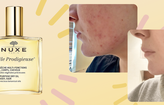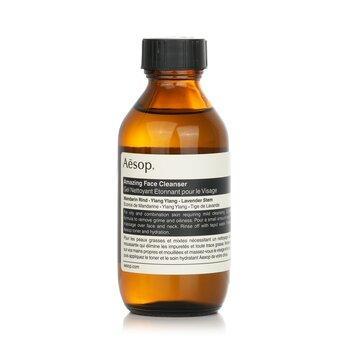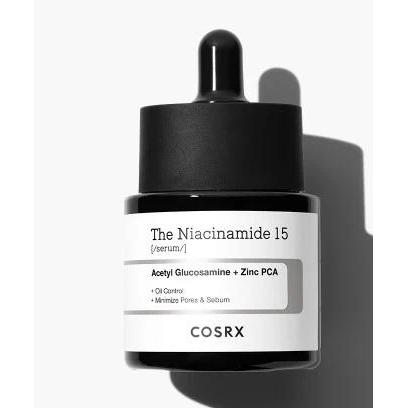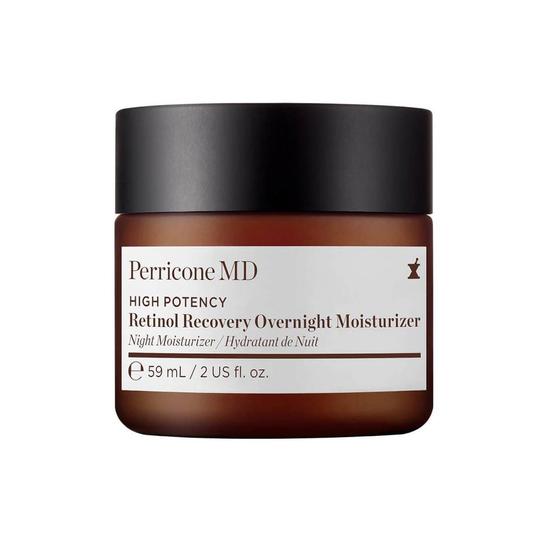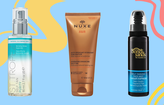
- Skin
- Niacinamide With Retinol
Can You Use Niacinamide With Retinol?
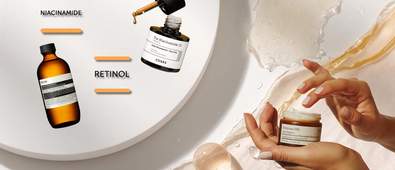
When not one, but two skincare saviours collide, it's something of a match made in dermatological heaven: niacinamide and retinol are arguably one such pairing.
Niacinamide began with the study of niacin (Vitamin B3) deficiency, pellagra, in the early 1900s and has travelled through centuries of science, nutrition and--of course--skincare, where it can offer a plethora of benefits from smoothing and brightening to hydration and skin barrier reinforcing. Retinol (which also goes by the name vitamin A1) is a derivative of Vitamin A. Usually found in food or dietary supplements, this skincare active has a topically medicinal history that can be traced back to Egyptian times; today, skincare fanatics use it for its anti-ageing and anti-acne effects.
Can You Use Niacinamide With Retinol?
Yes! Not only can you use niacinamide with retinol—you should.
Not only can you use niacinamide with retinol—you should. This pairing is often recommended by dermatologists to help buffer retinol’s intensity while enhancing skin tone and texture. Niacinamide calms and strengthens the skin barrier, which can minimise common side effects like dryness, redness, or peeling from retinol use.
Each ingredient serves a distinct purpose: niacinamide offers anti-inflammatory and brightening benefits, while retinol boosts cell turnover and collagen production. Together, they form a well-rounded routine for smoother, clearer skin.
What Does Niacinamide Do For Skin?
Niacinamide, also known as vitamin B3, is a multi-tasking skincare ingredient beloved for its calming, brightening, and barrier-repairing properties. It helps reduce inflammation, improve uneven skin tone, minimise enlarged pores, and regulate oil production.
What makes niacinamide especially versatile is its compatibility with most other actives—making it a go-to for those building a layered skincare routine. It strengthens the skin barrier, boosts hydration, and supports overall resilience—ideal for anyone looking to smooth and rebalance their skin without irritation.
Key Benefits Of Niacinamide Include:
- Improved Skin Tone: Helps reduce hyperpigmentation, dullness, and blotchiness, leading to a more even and luminous complexion.
- Reduces Inflammation: Niacinamide has anti-inflammatory properties that calm red, irritated, or acne-prone skin—making it ideal for sensitive types.
- Regulates Oil Production: Balances sebum levels, helping to prevent breakouts and unwanted shine.
- Minimises Pore Appearance: Over time, it tightens and refines skin texture, visibly reducing enlarged pores.
- Strengthens the Skin Barrier: Reinforces your skin’s natural defences, helping retain hydration and fend off environmental stressors.
- Supports Elasticity: When used with retinol, it enhances skin firmness and resilience, reducing sensitivity.
(Sources: Healthline, Wikipedia)
Niacinamide: Suitable For All Skin Types
Dry and Dehydrated Skin: Strengthens the skin barrier and improves moisture retention, especially when paired with hydrators like hyaluronic acid.
Oily and Acne-Prone Skin: Helps regulate sebum production and reduce inflammation without stripping the skin.
Sensitive or Reactive Skin: Gentle and non-irritating, reduces redness and reinforces skin resilience.
Combination Skin: Balances oil in the T-zone while calming dry or flaky areas.
What Does Retinol Do For Skin?
Retinol is a derivative of vitamin A and one of the most well-researched ingredients in dermatology for addressing signs of ageing, acne and uneven skin texture. It works by increasing cell turnover, meaning it helps your skin shed dead cells faster and generate fresh, new ones underneath. This process visibly reduces fine lines, refines pores, fades dark spots, and smooths the overall texture of the skin.
Retinol also boosts collagen production over time, which supports firmer, more elastic skin. However, its potency comes with a catch—it can cause dryness, sensitivity and peeling if not introduced gradually or paired with barrier-supporting ingredients like niacinamide or hyaluronic acid.
Key Benefits Of Retinol Include:
- Boosts Cell Turnover: Speeds up the rate at which skin renews itself, helping to shed dead cells and reveal smoother, healthier skin beneath.
- Reduces Fine Lines and Wrinkles: Stimulates collagen production, softening the appearance of existing wrinkles and preventing new ones from forming.
- Clears Acne: Helps prevent clogged pores, reduces breakouts and treats existing blemishes by normalising skin cell behaviour.
- Evens Skin Tone: Fades dark spots, sun damage and post-acne hyperpigmentation for a more uniform complexion.
- Improves Texture: Refines rough patches and smooths out uneven or bumpy areas with consistent use.
- Enhances Firmness and Elasticity: Promotes collagen and elastin synthesis, helping skin appear firmer and more youthful over time.
(Source: Cleveland Clinic)
Retinol: Powerful But Needs Tailoring By Skin type
Normal to Dry Skin: Gradually introduce retinol and pair it with hydrating ingredients, such as hyaluronic acid, to reduce dryness and sensitivity.
Oily and Acne-Prone Skin: Highly beneficial due to its exfoliating properties, helping to manage oiliness and reduce blemishes.
Sensitive Skin: Start slowly with a lower concentration, initially applying only a few times a week to minimise irritation. Buffer with moisturiser.
Mature Skin: Great for improving fine lines, firmness, and sun damage—build up use slowly for long-term results.
Why Do Niacinamide And Retinol Work Well Together?
Niacinamide and retinol are a highly compatible duo because they counterbalance each other’s potential downsides while amplifying overall skin benefits. Retinol accelerates cell turnover, boosts collagen production, and targets acne and fine lines—but it can also trigger dryness, redness, and sensitivity, particularly in the early stages of use.
Niacinamide (vitamin B3), on the other hand, is known for its soothing, anti-inflammatory, and barrier-repairing qualities. It strengthens the skin’s protective layer, improves moisture retention and reduces redness—all of which help reduce the irritation often associated with retinol.
Used together, retinol refines the skin, while niacinamide calms and reinforces it. This pairing is especially suitable for sensitive or acne-prone skin types seeking anti-ageing benefits without compromising skin comfort.
Comparing Niacinamide and Retinol side-by-side
Retinol also works well with
Bakuchiol – A gentler plant-based retinol alternative that can complement retinol’s benefits while reducing potential irritation.
Allantoin – Soothes the skin and promotes healing, helping to reduce flaking and dryness.
Ceramides – Supports barrier repair and reduces the harshness of retinol during early use.
How To Apply Niacinamide And Retinol Together
A.M.
- Cleanse your face and pat skin completely dry.
- Use a niacinamide serum followed by a moisturiser and SPF during the day.
P.M.
- Apply a serum in the evenings after cleansing and drying your face.
- Seal with a moisturiser to lock in hydration and reduce potential irritation.
FAQs
How to layer niacinamide and retinol
To effectively layer niacinamide and retinol, start with a gentle cleanser and pat your skin dry. Apply retinol first to clean, dry skin and allow it to absorb fully—this typically takes about 5–10 minutes. Follow with a niacinamide serum to help soothe the skin and strengthen the skin barrier, reducing potential irritation from retinol. Finish with a moisturiser, and in the morning, apply sunscreen to protect against increased sun sensitivity.
Is niacinamide or retinol better for texture?
Retinol works faster on deep texture issues like fine lines and roughness, while niacinamide refines pores and evens out tone over time. Used together, they smooth and strengthen the skin more comprehensively.
Should I apply moisturiser after using both?
Follow with a moisturiser to lock in hydration and buffer the skin from any potential dryness caused by retinol.
You've found out what you can use it with, now read up on exactly How To Use Niacinamide Serum For Your Best Skin Yet. Worried about how exactly retinol can be used on more sensitive-leaning skin? Our guide to The Best Retinol Alternatives for Sensitive Skin is for you. Mix, match and layer your way safely and find the perfect products and concentrations for your skin.

Written by Maria Mukaranda
Maria’s background is rooted primarily in creative media and a love for all things written, expressed through experience both online and in print; for creative platforms spanning from music to fashion to beauty.
Top Posts

